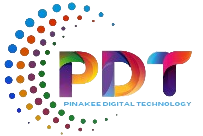
Transitioning from manual to automated processes in software development can be a significant leap forward for organizations, offering numerous benefits in terms of efficiency, reliability, and scalability. Here’s a breakdown of the transition process and its implications:
- Assessment and Planning: The first step is to assess the current manual processes and identify areas where automation can bring the most value. This involves analyzing workflows, tasks, and dependencies to determine which processes are suitable candidates for automation. A detailed plan should be developed, outlining the objectives, timeline, resources, and potential challenges of the transition.
- Selecting the Right Tools and Technologies: Once the areas for automation are identified, the next step is to select the appropriate tools and technologies. This may involve choosing automation frameworks, testing tools, continuous integration/continuous deployment (CI/CD) pipelines, and other software solutions that align with the organization’s needs and objectives.
- Training and Skill Development: Transitioning to automated processes often requires upskilling or retraining the existing workforce. Employees need to be trained on the selected tools and technologies, as well as best practices for automation, such as writing automated tests, creating deployment scripts, and monitoring automated pipelines. Investing in training and skill development ensures that the team is equipped to effectively utilize automation tools and maximize their benefits.
- Pilot Projects and Iterative Implementation: It’s advisable to start with small pilot projects or proof-of-concept initiatives to validate the effectiveness of automation in real-world scenarios. This allows teams to gain hands-on experience, identify potential challenges, and refine their approach before scaling up automation across the organization. The implementation process should be iterative, with regular feedback loops and continuous improvement to optimize automated processes over time.
- Integration and Collaboration: Automation should be integrated seamlessly into existing development workflows and collaboration processes. This requires close collaboration between development, operations, quality assurance, and other teams to ensure alignment and coordination. Tools like version control systems, issue trackers, and communication platforms play a crucial role in facilitating collaboration and streamlining the transition to automation.


Monitoring and Optimization: Once automated processes are in place, it’s essential to establish monitoring mechanisms to track performance, identify bottlenecks, and troubleshoot issues proactively. Continuous optimization is key to maximizing the efficiency and effectiveness of automation over the long term. This involves analyzing metrics, gathering feedback, and making iterative improvements to the automated workflows and systems.
